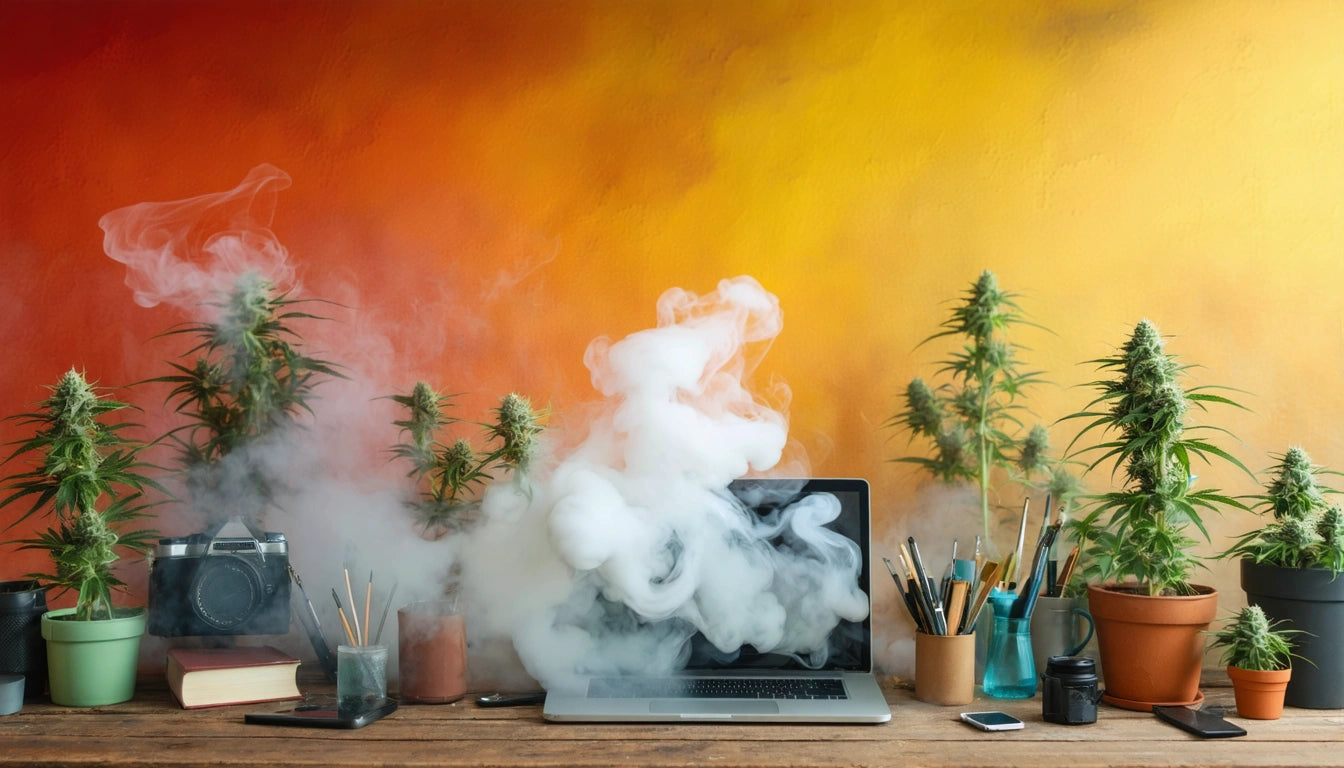Table of Contents
- Cannabis Smoke Properties and Wall Penetration
- Does Weed Smoke Stain Walls? Understanding Residue Buildup
- Can Weed Smell Go Through Walls? Odor Transmission Explained
- Neighbor Concerns: When Cannabis Odor Becomes a Shared Issue
- Prevention Methods to Reduce Smoke Damage and Odor Transfer
- Effective Solutions for Long-Term Cannabis Consumption Spaces
How Cannabis Smoke and Odor Affect Walls and Neighbors
Cannabis consumption in residential settings raises legitimate concerns about property damage and neighborly relations. Understanding how smoke interacts with indoor environments helps consumers make informed decisions about where and how they enjoy their products. This guide addresses common questions about cannabis smoke's impact on walls and its tendency to travel between living spaces.
Cannabis Smoke Properties and Wall Penetration
Cannabis smoke contains particulate matter, volatile compounds, and aromatic terpenes that behave differently than tobacco smoke. These components can penetrate porous surfaces like drywall, textured ceilings, and fabric wall coverings. The smoke particles are microscopic, allowing them to infiltrate tiny cracks and openings around doors, windows, and electrical outlets.
According to research on cannabis odor pervasiveness, the molecular structure of cannabis terpenes gives them exceptional penetrating power. These compounds can adhere to surfaces and remain active for extended periods, creating persistent odor issues even after the smoke has visibly cleared.
Does Weed Smoke Stain Walls? Understanding Residue Buildup
Yes, cannabis smoke can stain walls over time. While less severe than tobacco smoke, regular cannabis consumption in enclosed spaces leads to a gradual buildup of yellowish-brown residue on walls, ceilings, and other surfaces. This residue comes from tar and resin components in the smoke that adhere to surfaces through a process called third-hand smoke deposition.
Factors affecting staining severity include:
- Frequency of consumption
- Ventilation quality
- Wall surface type (flat paint is more susceptible than glossy finishes)
- Proximity to the smoke source
- Humidity levels in the room
The residue buildup is often most noticeable around air vents, above heat sources, and in corners where air circulation is limited. Over months or years, these deposits can become increasingly difficult to remove without repainting.
Can Weed Smell Go Through Walls? Odor Transmission Explained
Cannabis odor can indeed travel through walls, especially in buildings with older construction or shared ventilation systems. The aromatic terpenes in cannabis are volatile organic compounds designed by nature to travel through air efficiently. Studies on cannabis odor transmission show that these molecules can penetrate through:
Common Penetration Points
- Shared ventilation ducts
- Electrical outlets and light fixtures
- Gaps around plumbing pipes
- Cracks in walls or ceilings
- Spaces under doors
- Window frames with poor sealing
Modern apartment buildings often have better insulation and separate HVAC systems, which can reduce but not eliminate odor transfer. However, even well-constructed buildings may experience some level of cannabis odor transmission, particularly during heavy consumption sessions.
Neighbor Concerns: When Cannabis Odor Becomes a Shared Issue
Can neighbors smell weed through walls? Unfortunately, the answer is frequently yes. Neighboring residents often detect cannabis odors, especially in multi-unit buildings with shared walls. The intensity of this experience depends on several factors:
- Building construction materials (concrete blocks provide better odor isolation than drywall)
- Distance between consumption area and shared walls
- Quantity and potency of cannabis being consumed
- Air pressure differences between units
- Weather conditions (humidity can intensify odor penetration)
For consumers concerned about discretion, proper storage solutions make a significant difference. Using airtight containers with secure lids for storing cannabis products can dramatically reduce ambient odor when products aren't in use.
Prevention Methods to Reduce Smoke Damage and Odor Transfer
Preventing cannabis smoke from staining walls and traveling to neighboring spaces requires proactive measures. Effective odor elimination strategies include:
Ventilation Improvements
- Using window fans positioned to exhaust smoke outdoors
- Installing carbon air purifiers designed for smoke filtration
- Creating negative pressure in the consumption room
- Using bathroom fans (which vent directly outside) during sessions
Surface Protection
- Applying washable, semi-gloss paint in consumption areas
- Regular cleaning of walls with appropriate degreasers
- Using washable wall coverings in dedicated consumption spaces
- Placing fabric absorbers like tapestries that can be laundered
Consumption Alternatives
- Switching to vaporizers which produce less residue
- Using edibles or tinctures that produce no smoke
- Consuming outdoors when possible and legal
- Using smoke buddy or other personal filtration devices
Does weed smell stick to walls? Yes, particularly on textured or porous surfaces. Regular cleaning with vinegar-based solutions or specialized smoke residue cleaners can help minimize buildup between more thorough cleaning sessions.
Effective Solutions for Long-Term Cannabis Consumption Spaces
For those who regularly consume cannabis indoors, creating a sustainable environment requires thoughtful planning. Consider these long-term solutions:
- Designate a specific room with appropriate ventilation for consumption
- Install weatherstripping around doors to prevent odor leakage
- Use HEPA air purifiers with activated carbon filters
- Schedule regular deep cleaning of walls and fabrics
- Apply odor-sealing primers before repainting affected areas
- Consider ozone treatments (when space is unoccupied) for persistent odor issues
Understanding how cannabis products create different aromas can also help consumers make informed choices about which products might be less likely to cause persistent odor issues in their living spaces.
By implementing these preventative measures and solutions, cannabis consumers can minimize property damage, maintain good relationships with neighbors, and create healthier indoor environments for themselves and others who share their living spaces.











Leave a comment
All comments are moderated before being published.
This site is protected by hCaptcha and the hCaptcha Privacy Policy and Terms of Service apply.